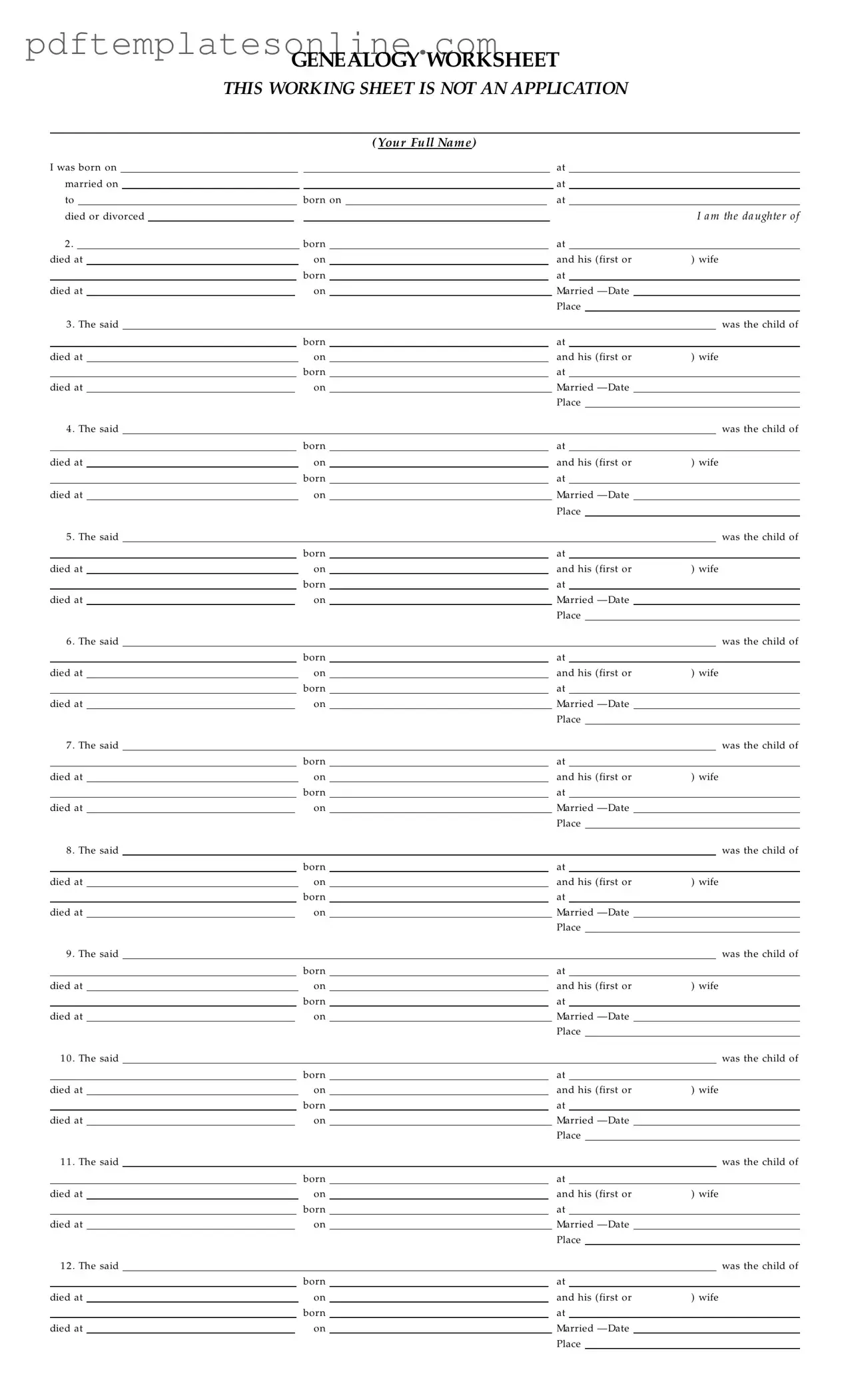Filling out the DAR Genealogy Worksheet can be a rewarding process, but it’s important to approach it with care. Many individuals make mistakes that can delay their application or even cause it to be rejected. One common error is incomplete information. When filling out the worksheet, it’s essential to provide full names, dates, and places for each ancestor listed. Omitting any details, even seemingly minor ones, can lead to complications down the line. Ensure that every section is filled out thoroughly to avoid unnecessary back-and-forth communication.
Another frequent mistake involves misidentifying relationships. It’s crucial to clearly establish how each ancestor is related to you. For example, specifying whether an ancestor is a parent, grandparent, or great-grandparent can significantly affect the lineage you are trying to prove. If the relationships are unclear or incorrect, it may result in a rejection of your application. Take your time to verify these connections before submitting the worksheet.
Many applicants also overlook the importance of providing sources for claims. The DAR requires proof of lineage, which means that simply stating names and dates is not enough. Supporting documentation such as birth certificates, marriage licenses, or census records must accompany your claims. Without proper documentation, your application may not be taken seriously, and your efforts could be wasted. Remember, tradition alone is not sufficient; documented proof is essential.
Lastly, a significant number of people fail to double-check their work before submission. Typos, misspellings, and incorrect dates can create confusion and hinder the processing of your application. It’s advisable to review the entire worksheet multiple times and, if possible, have someone else look it over as well. A fresh set of eyes can catch mistakes that you might have missed. Taking these steps can help ensure that your application is as strong as possible.
